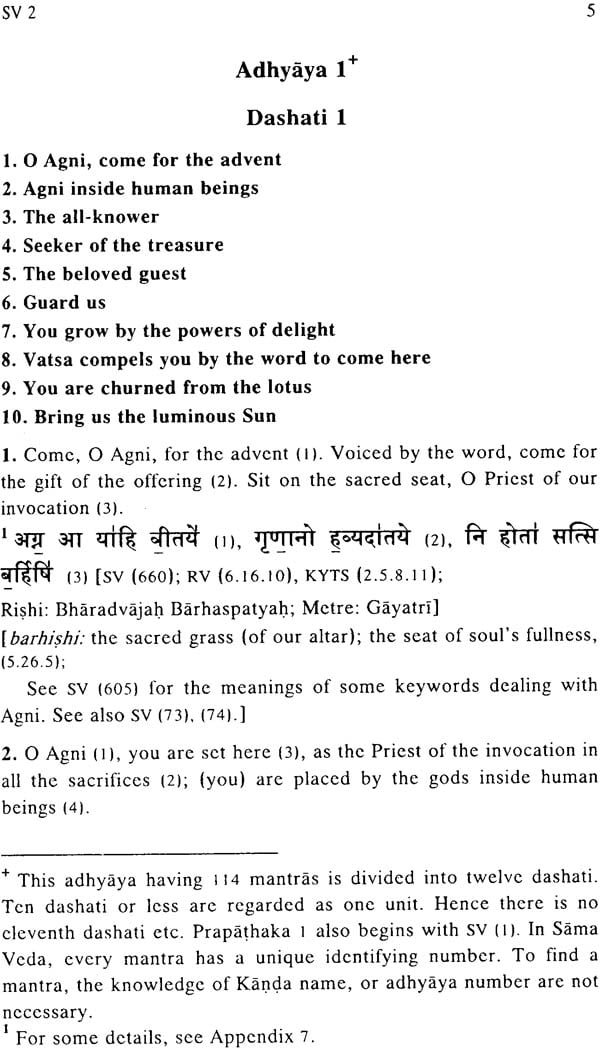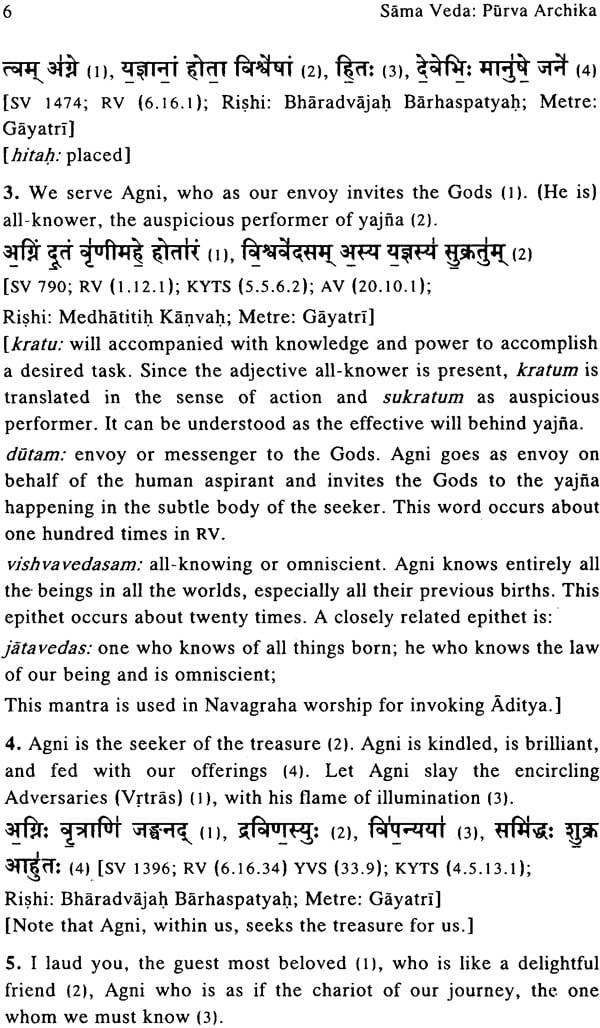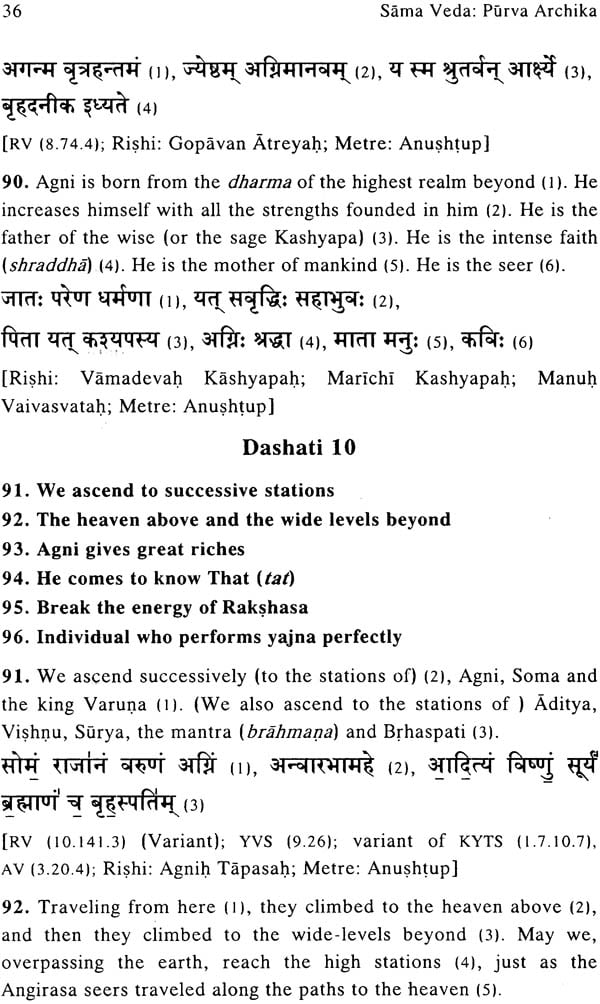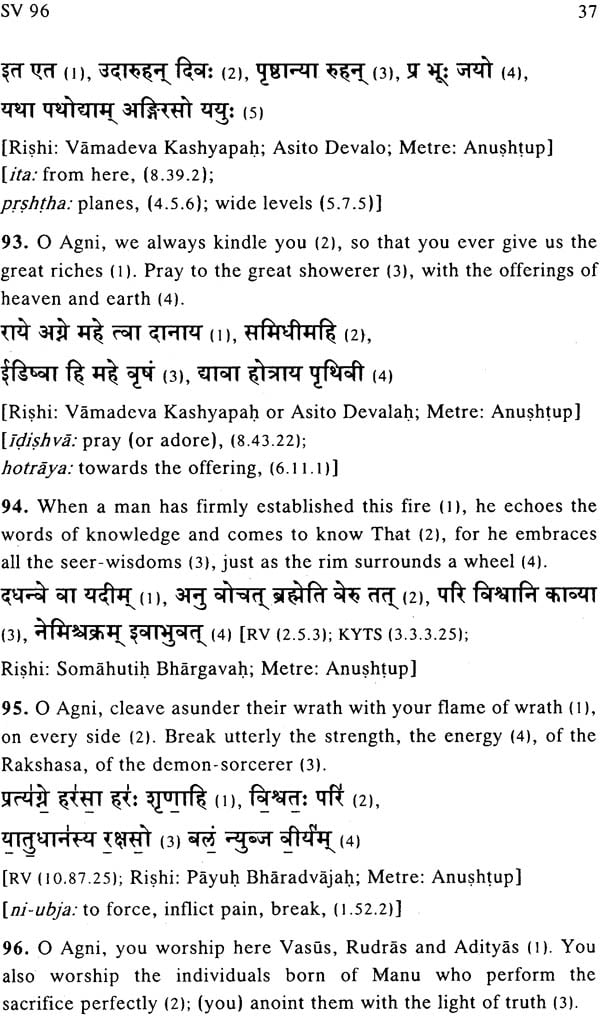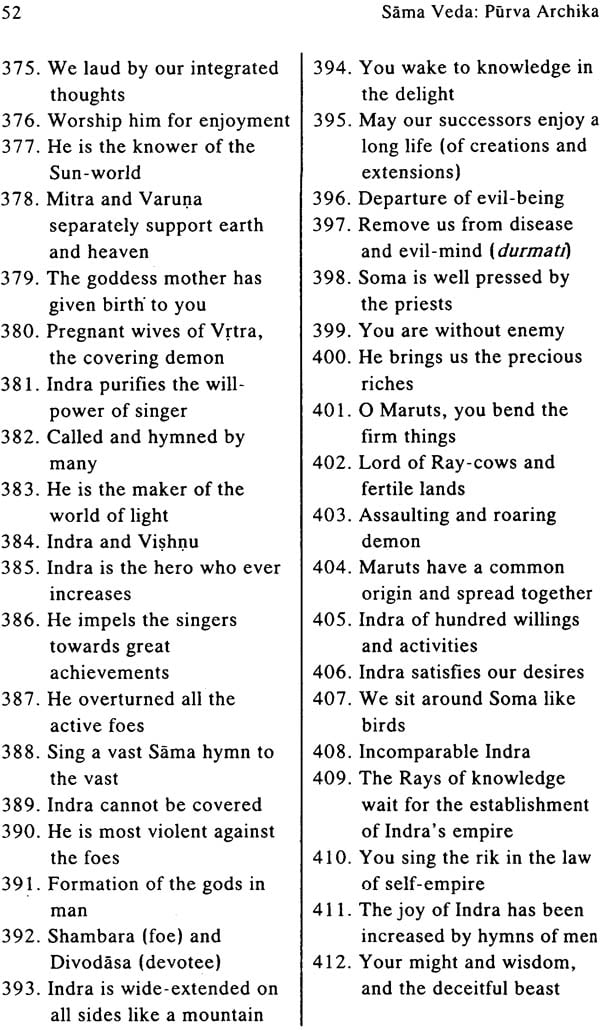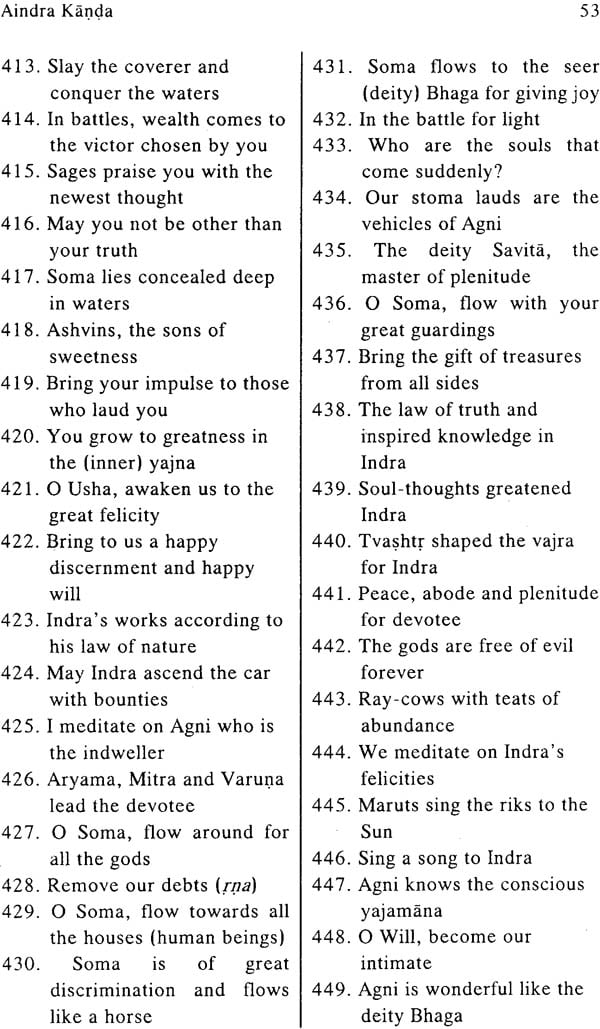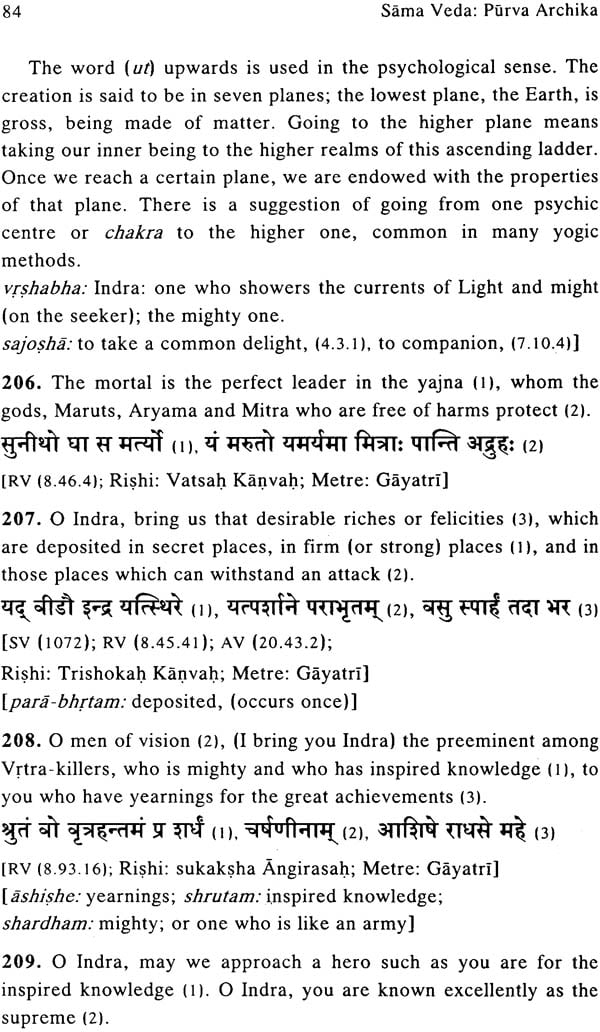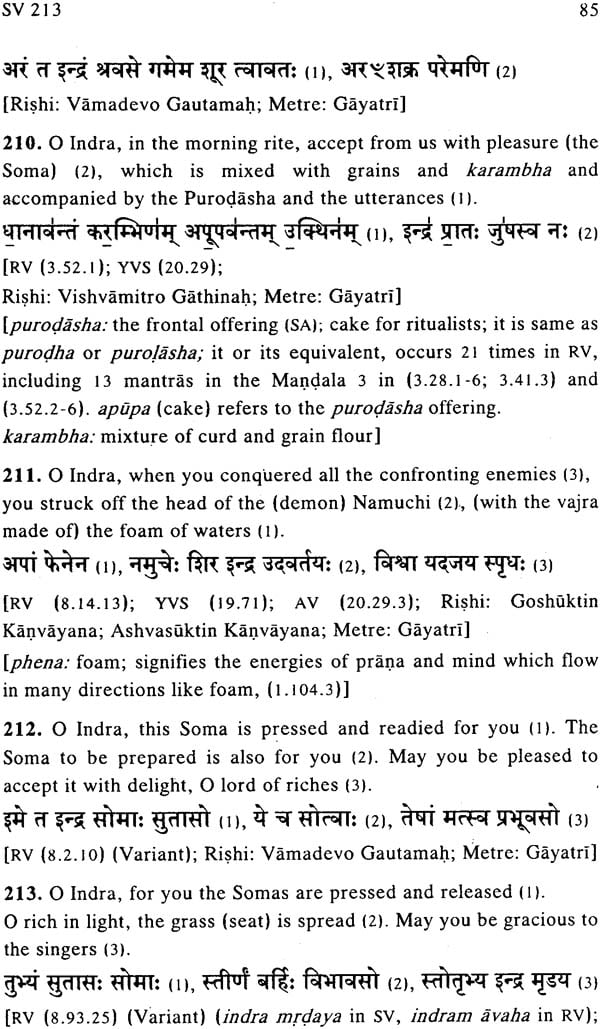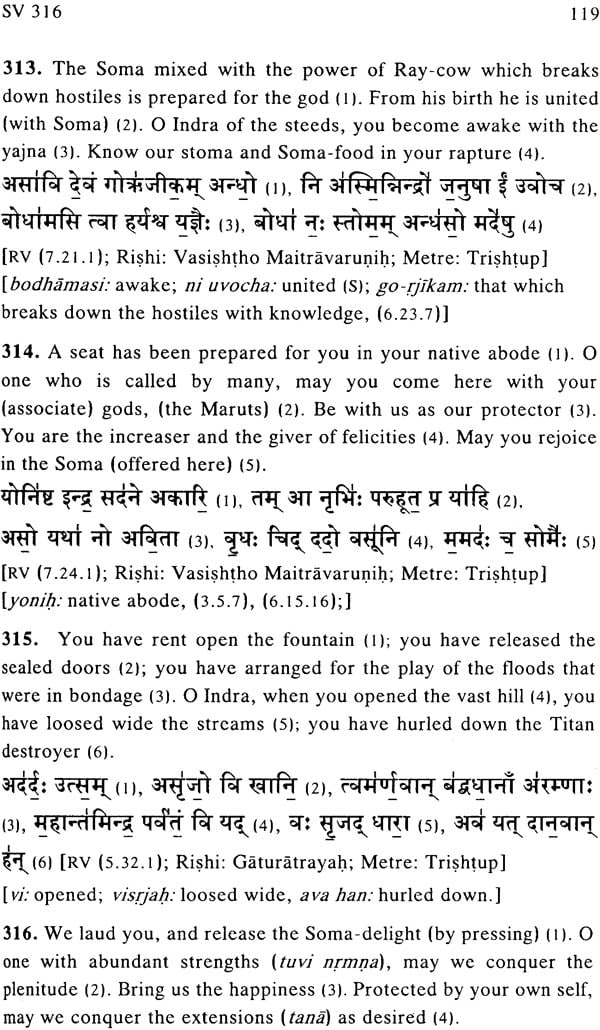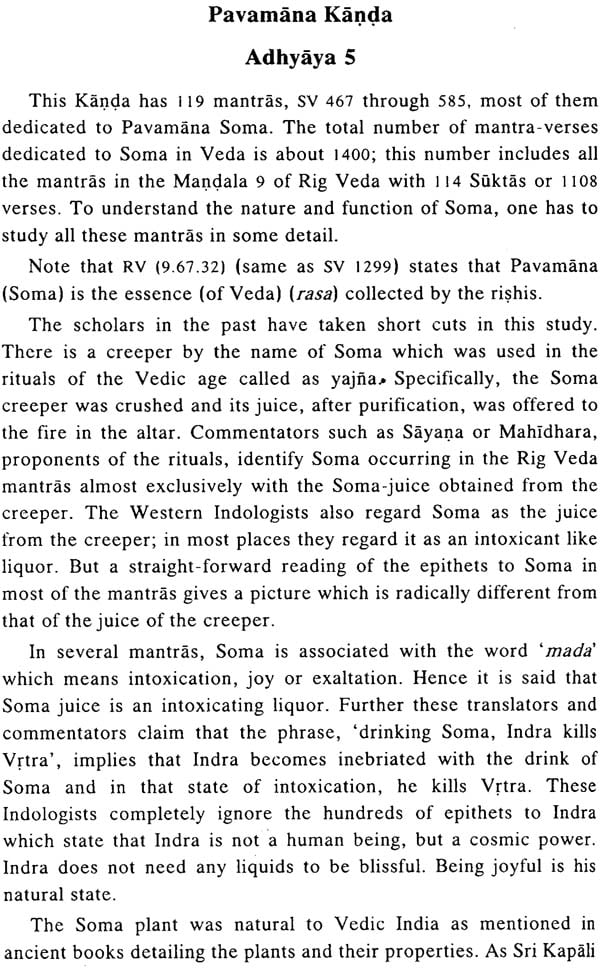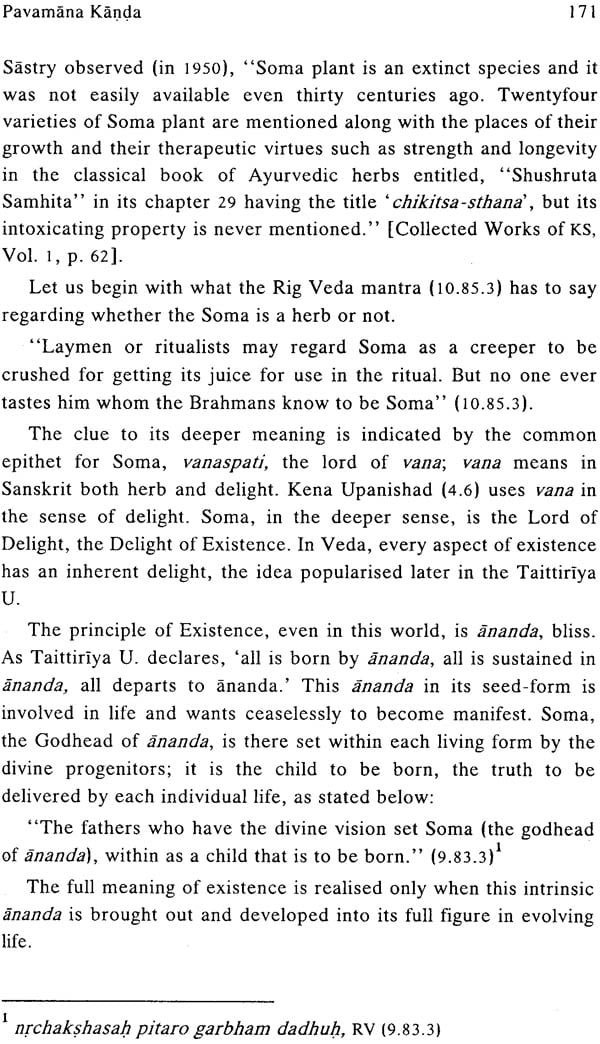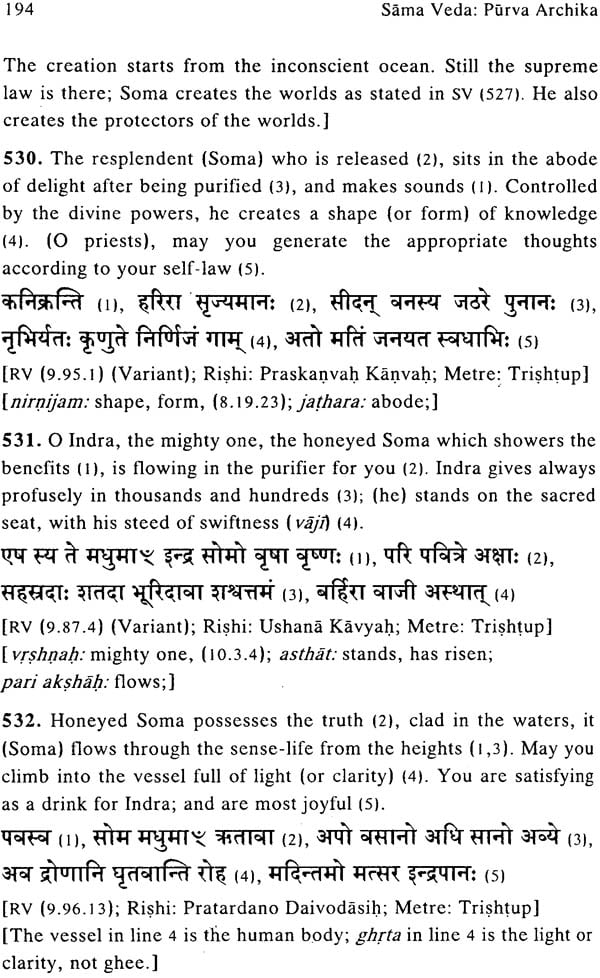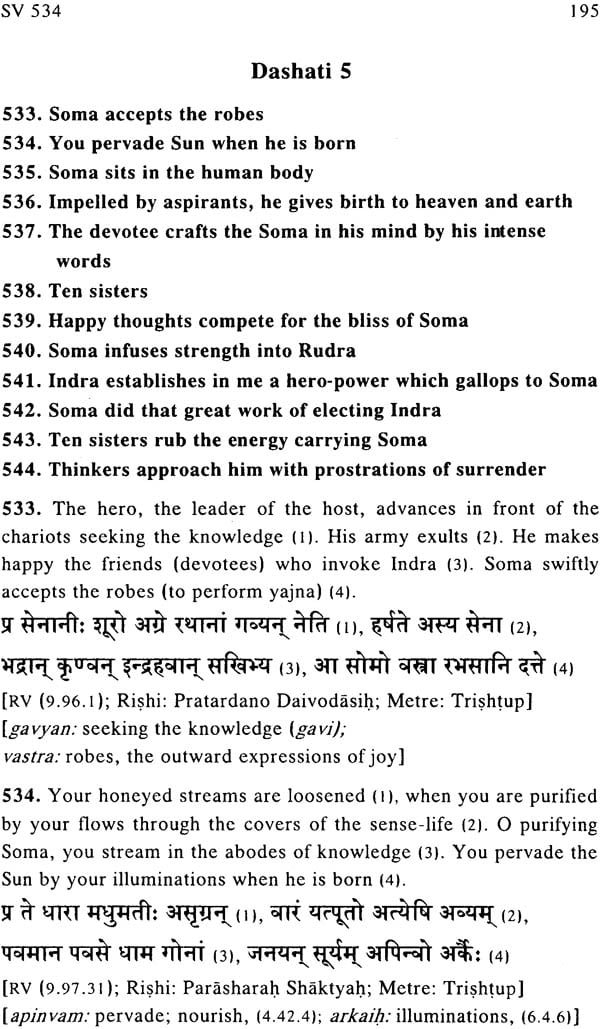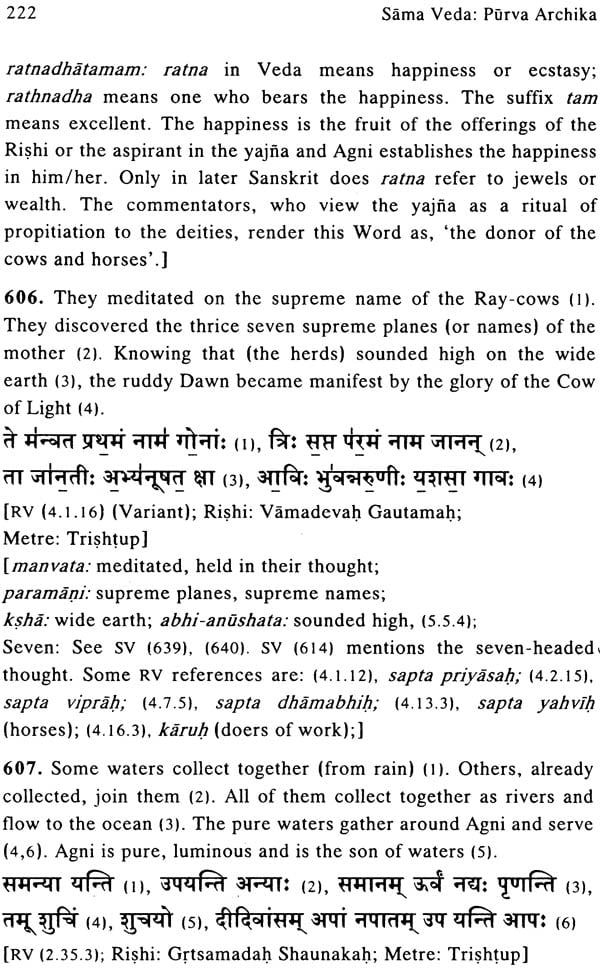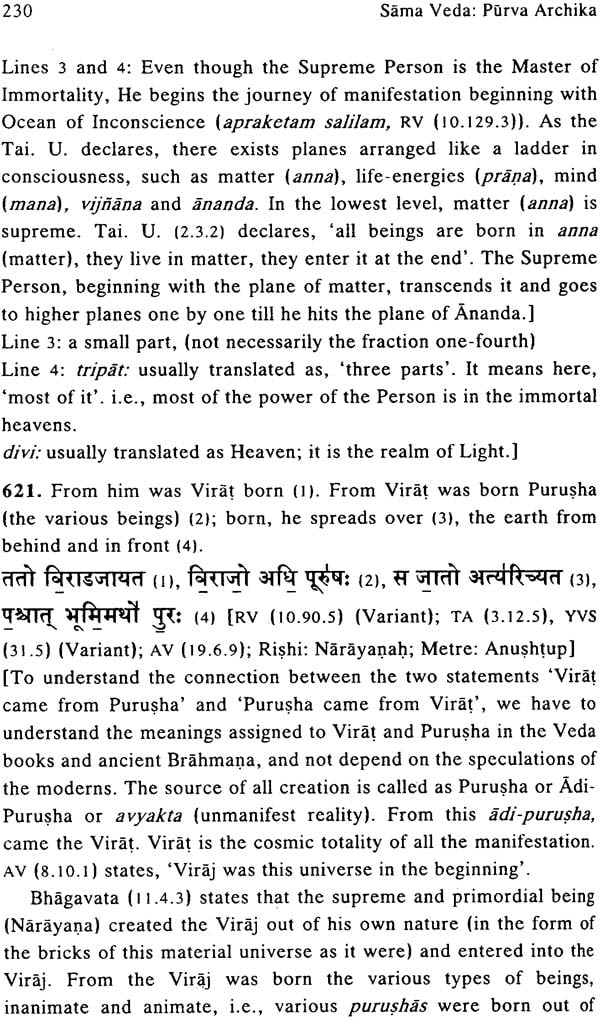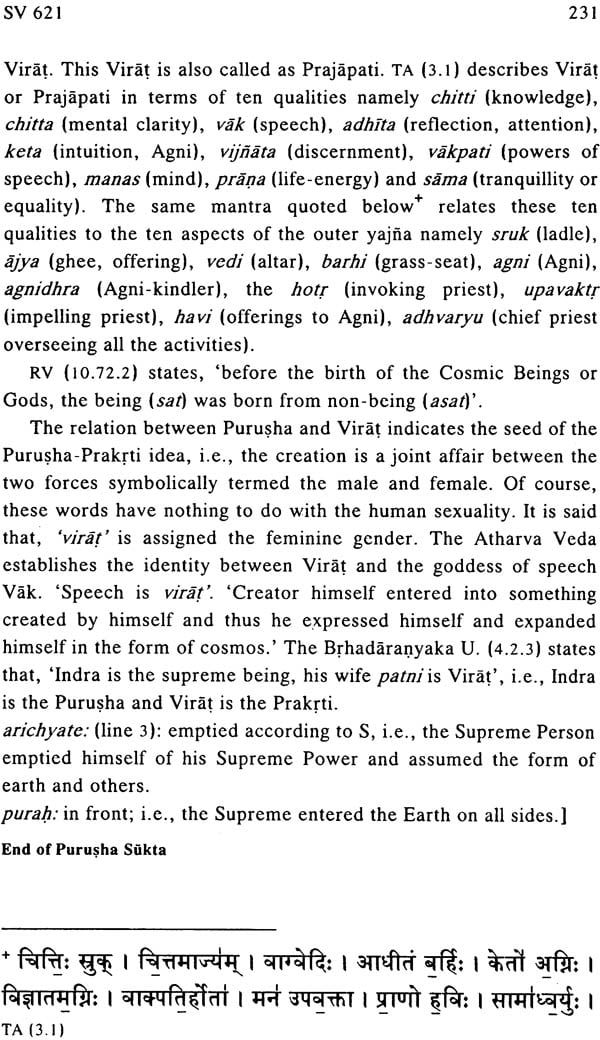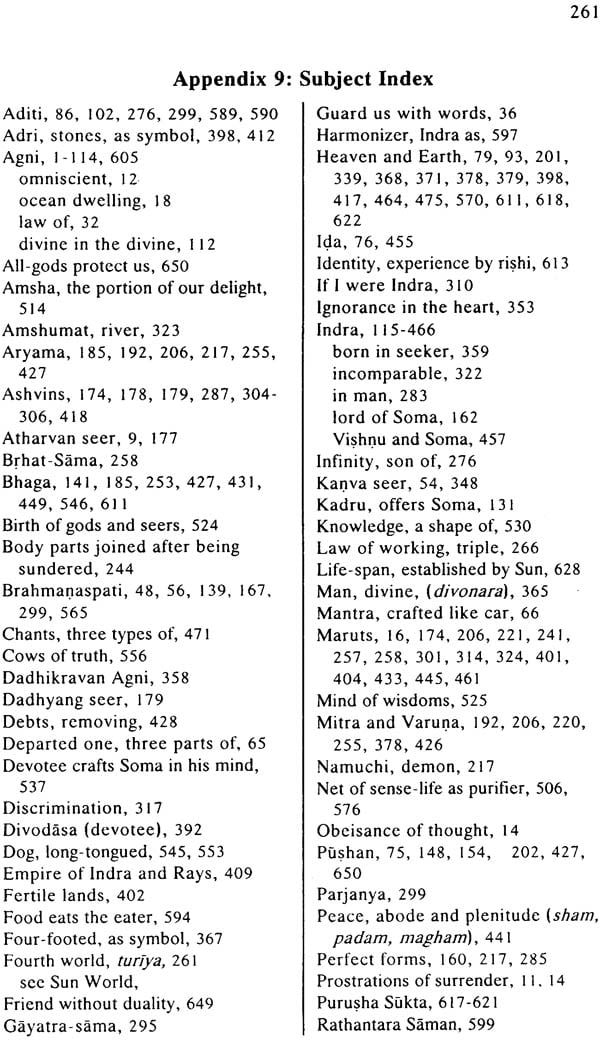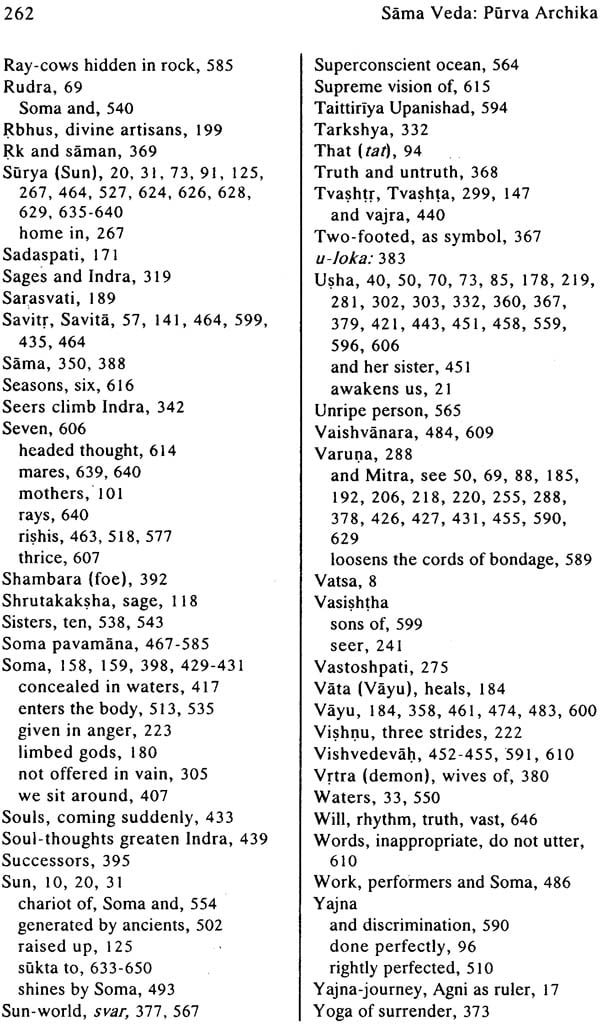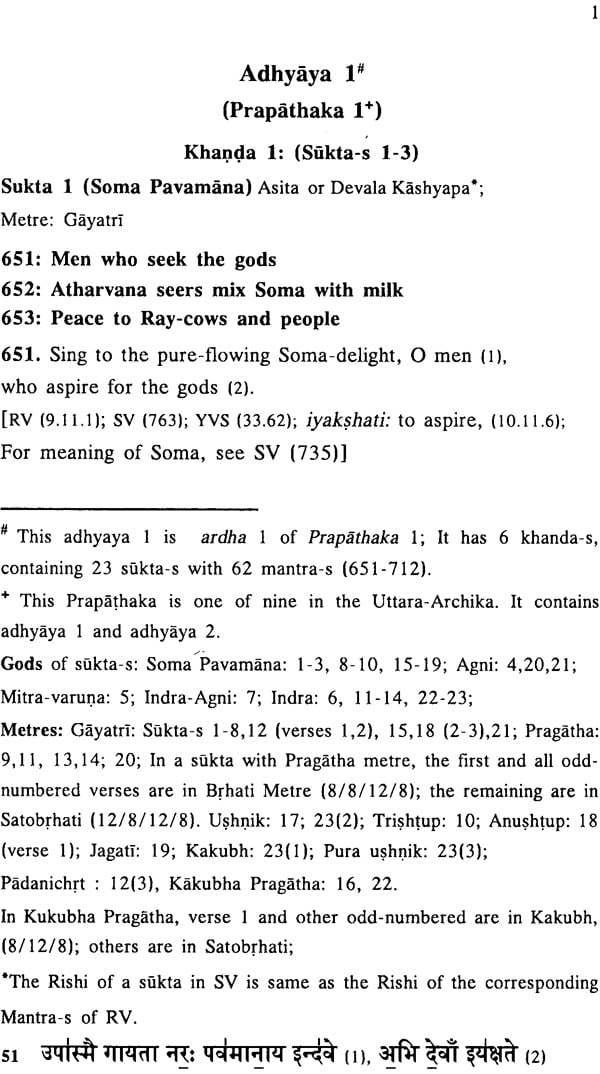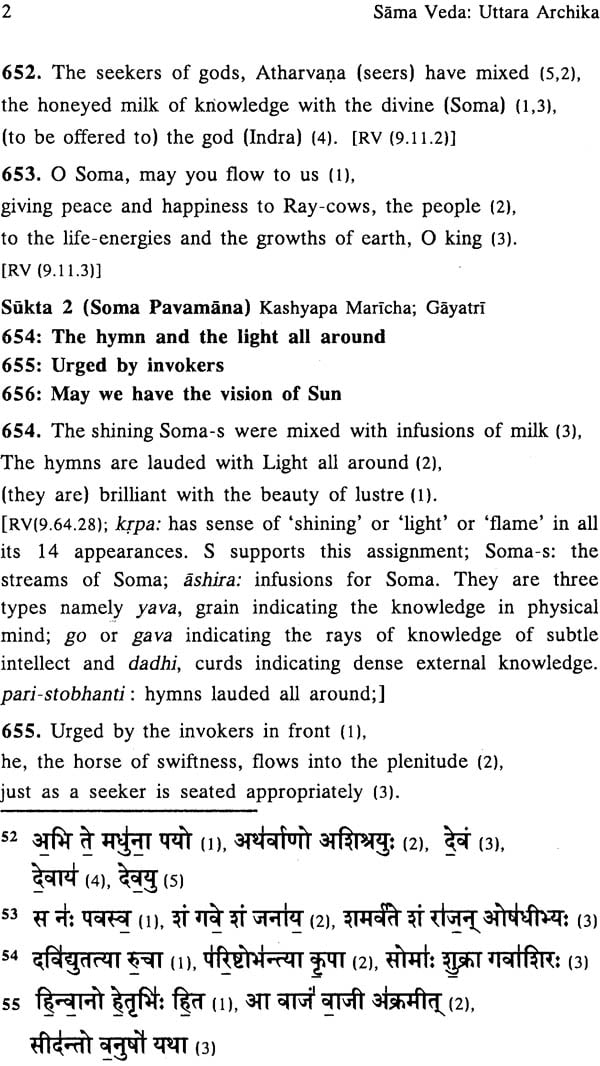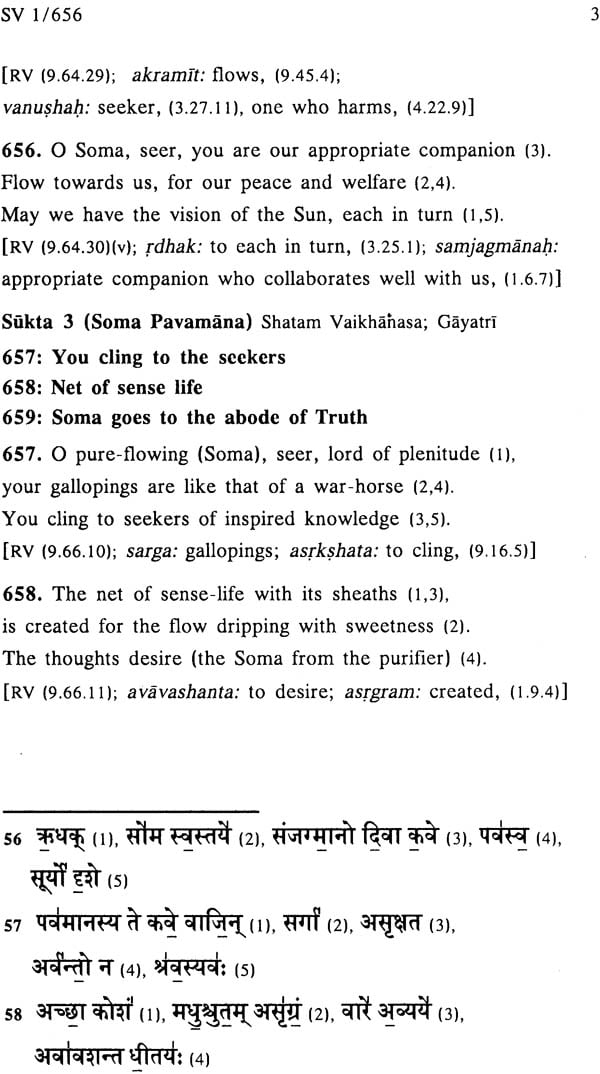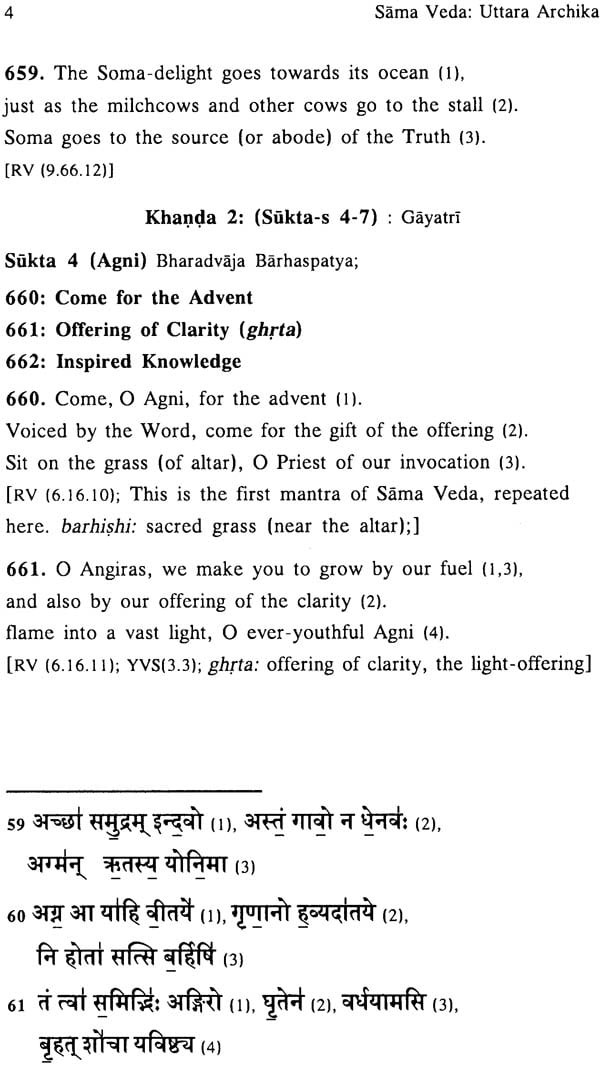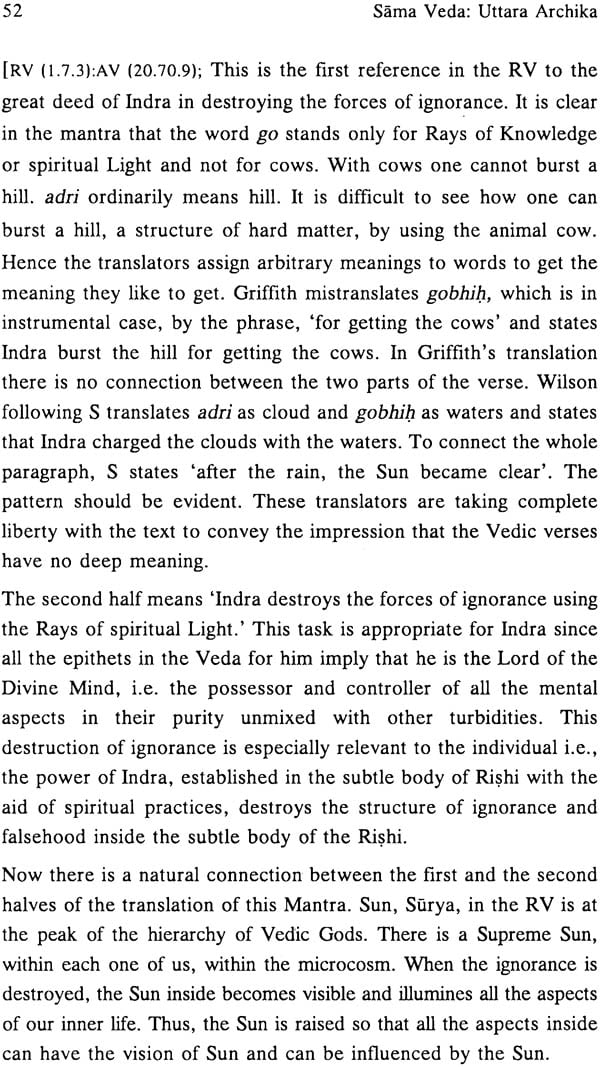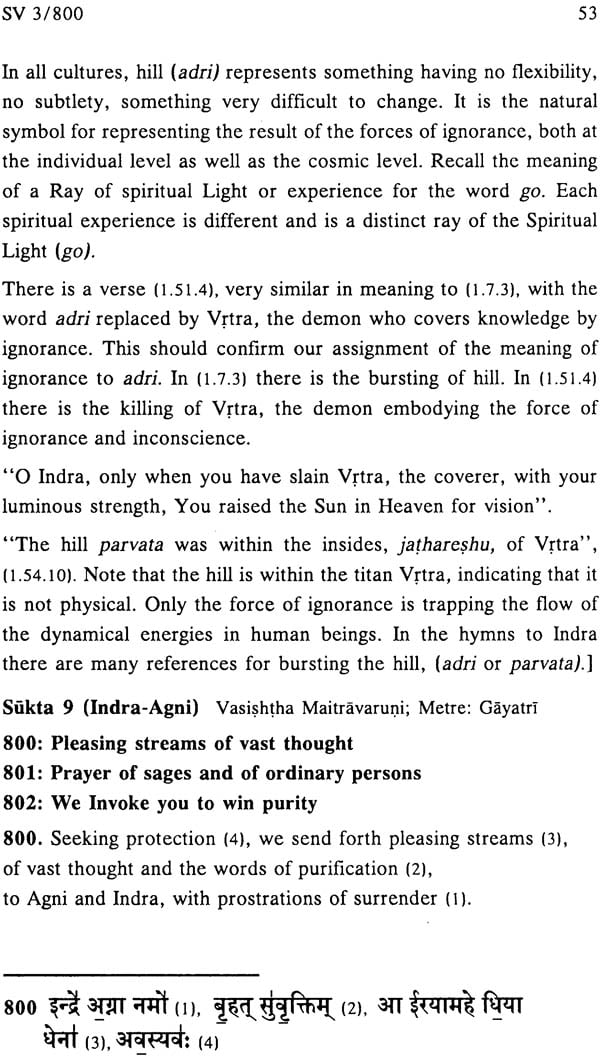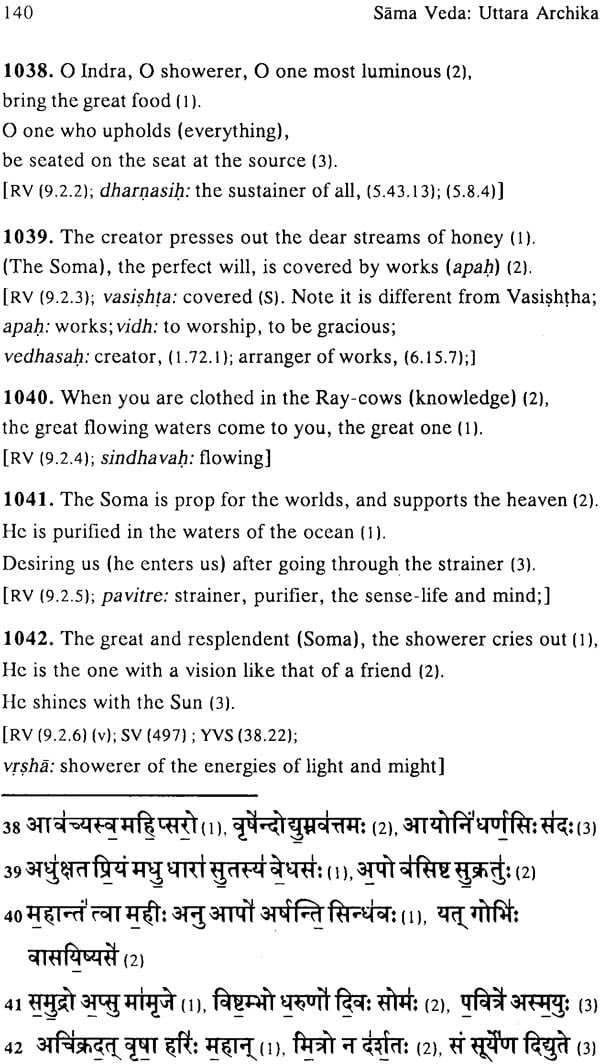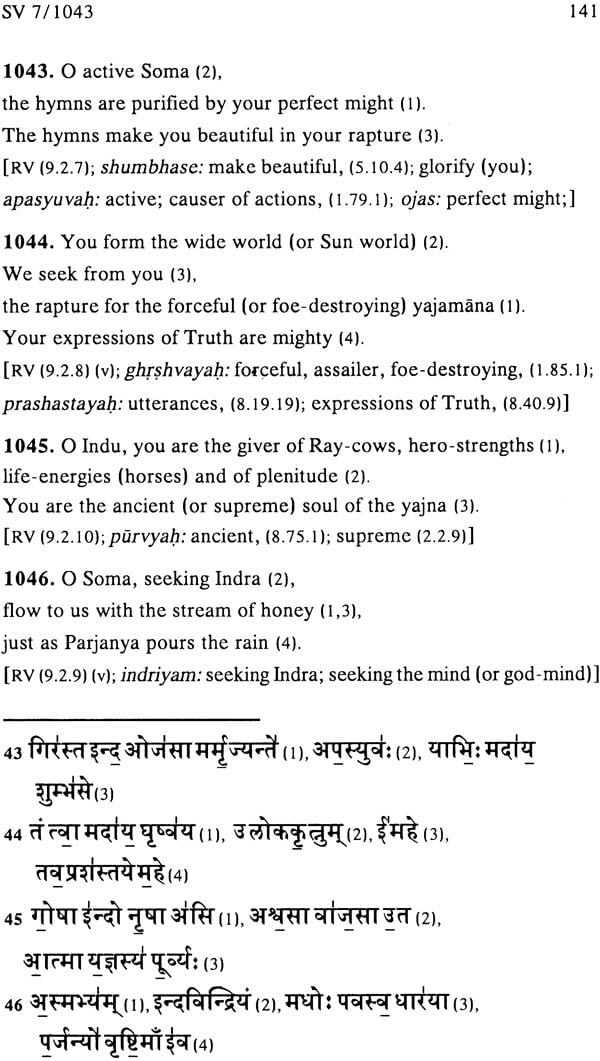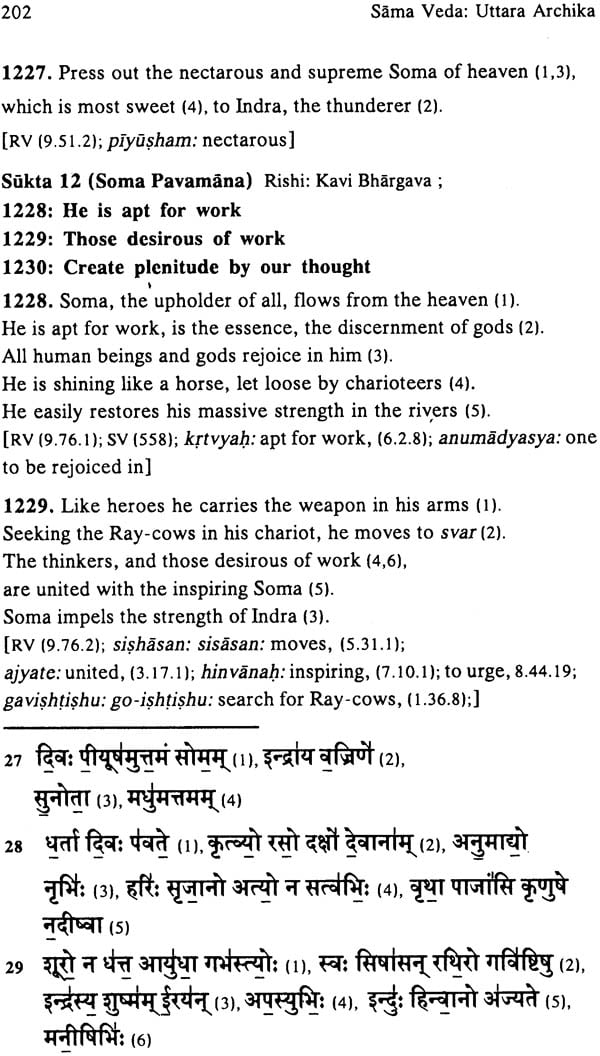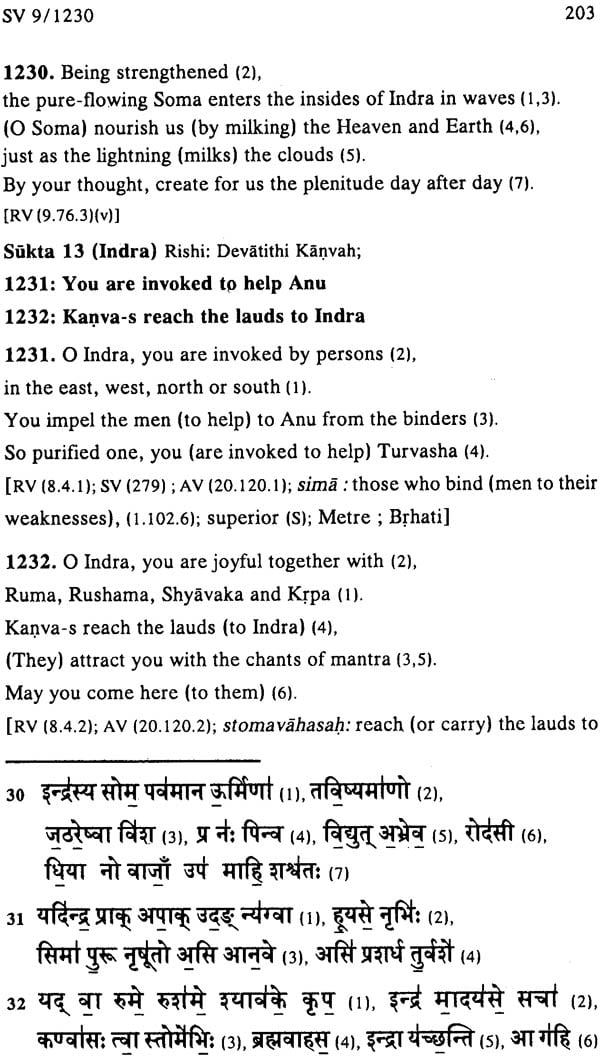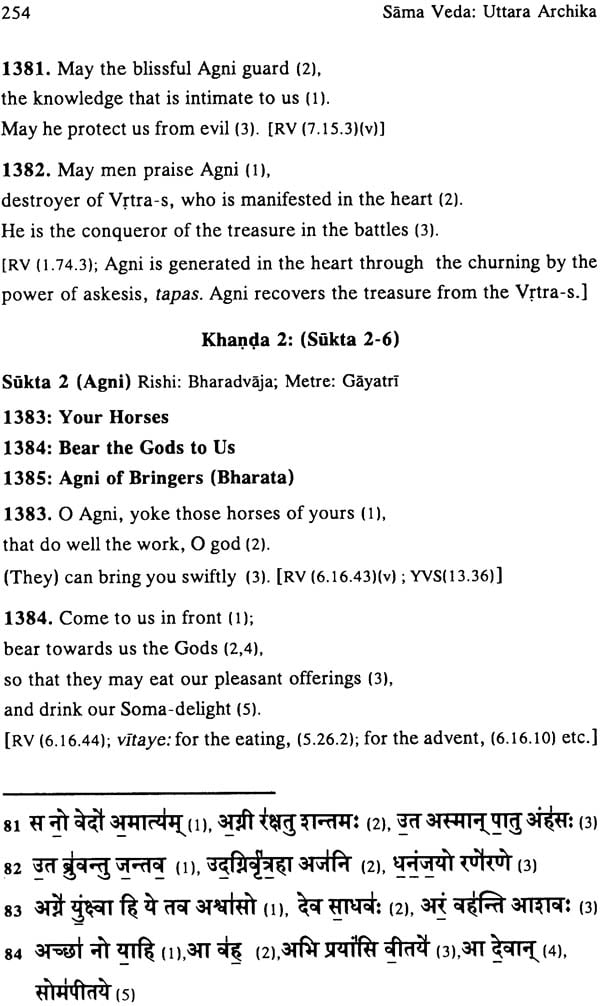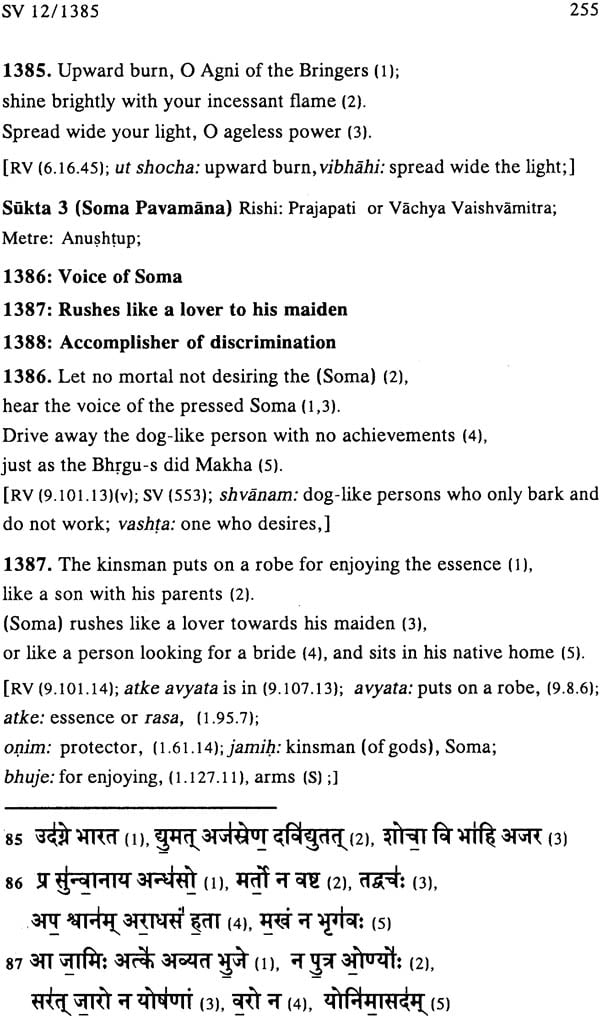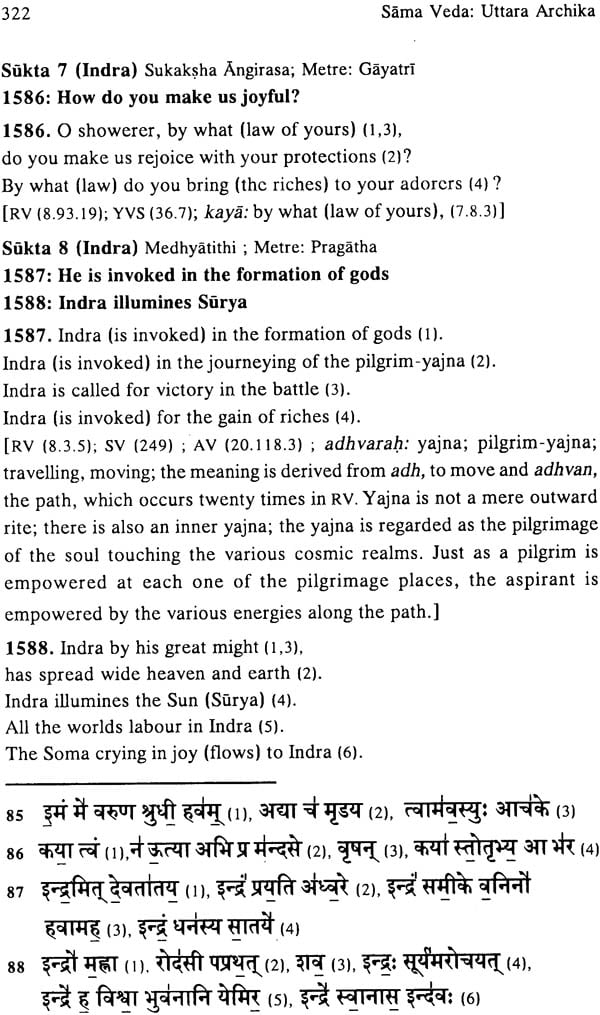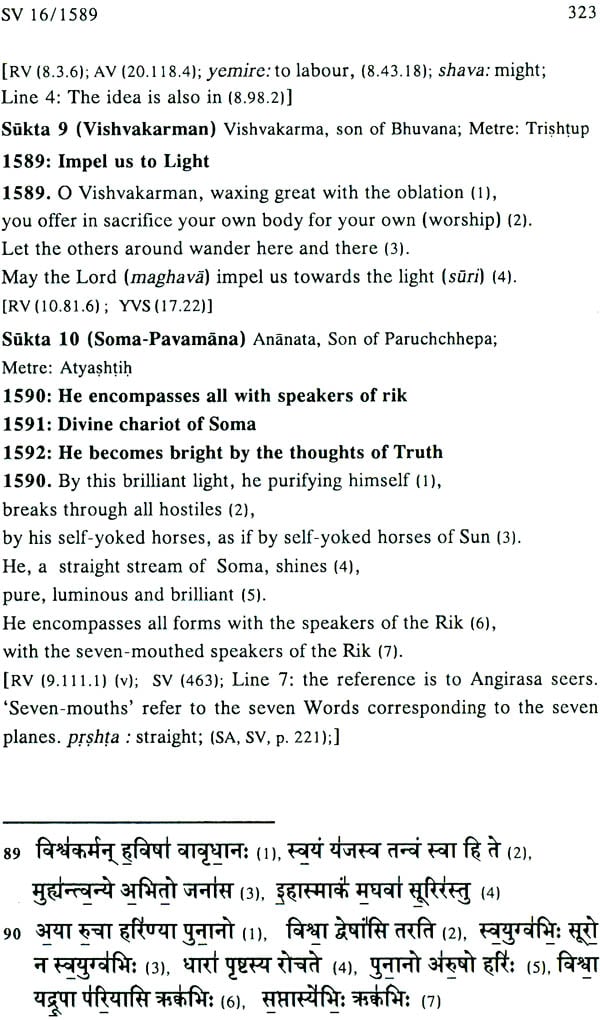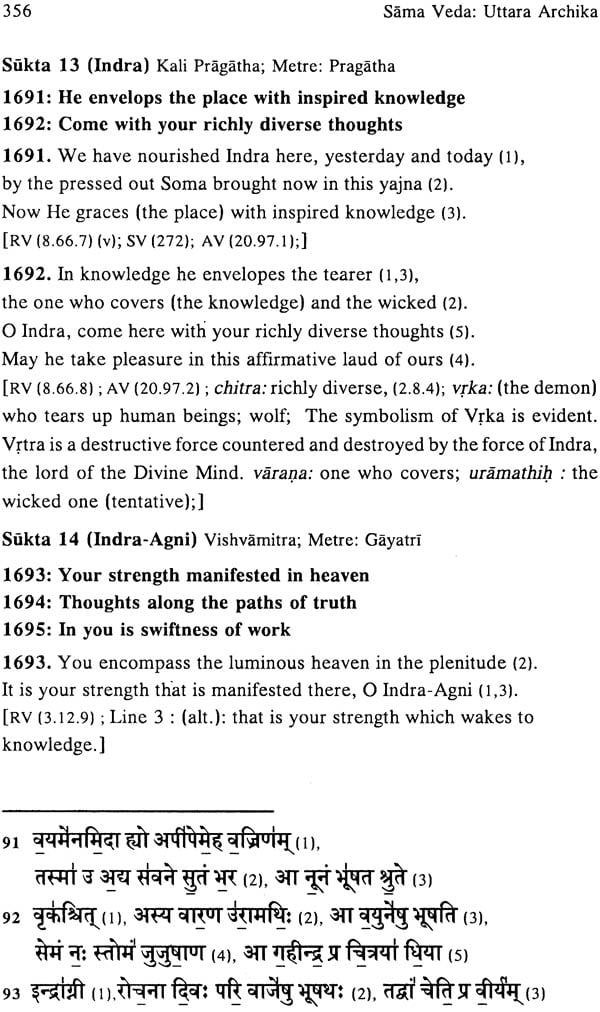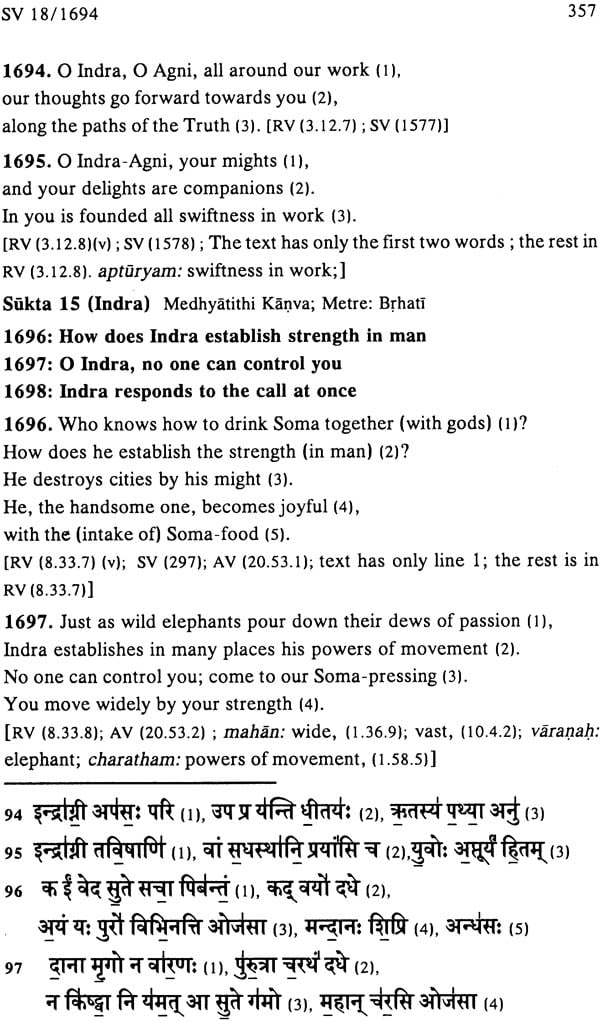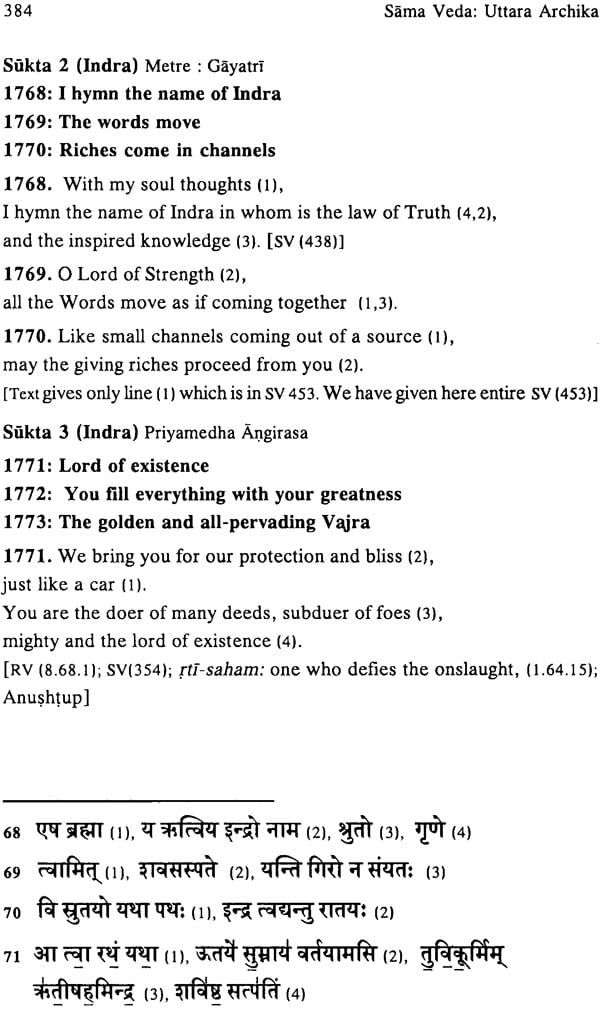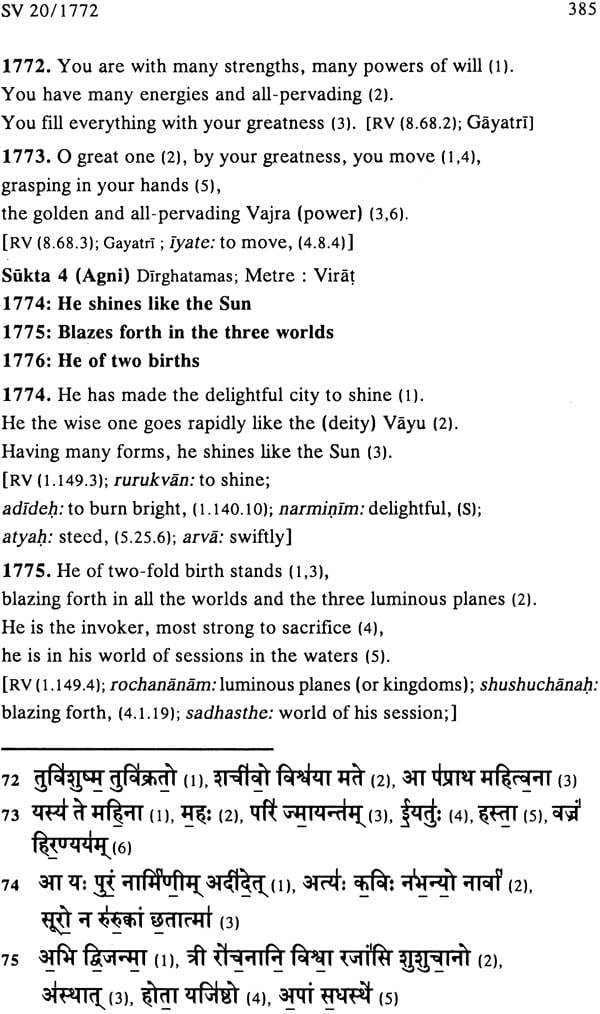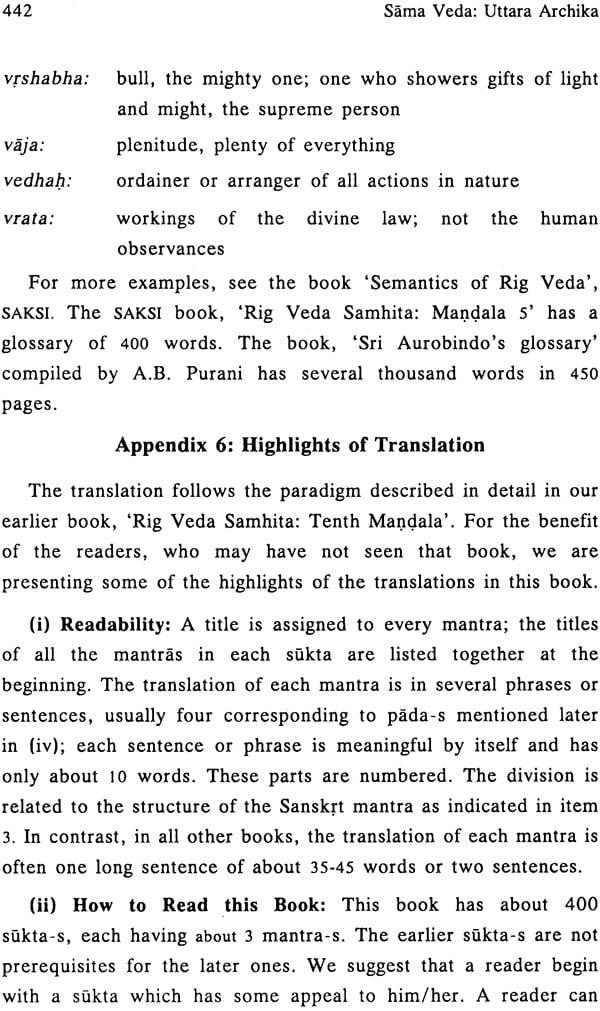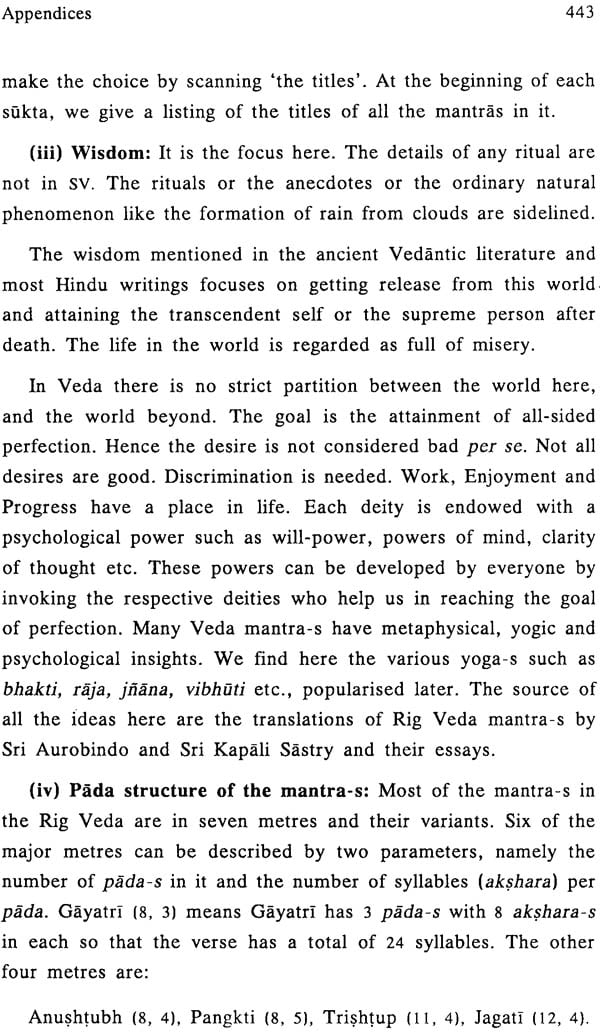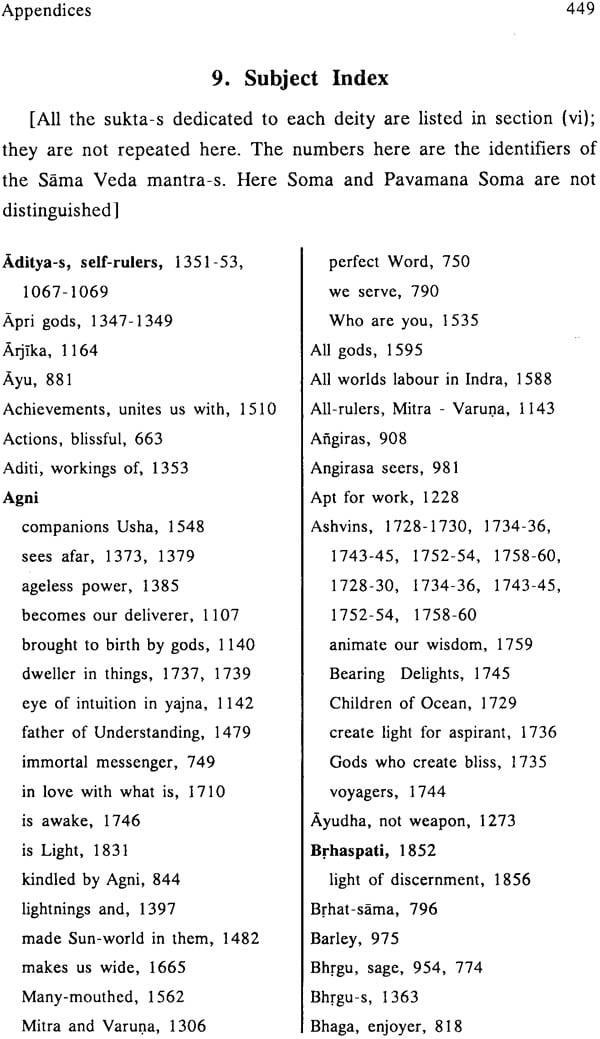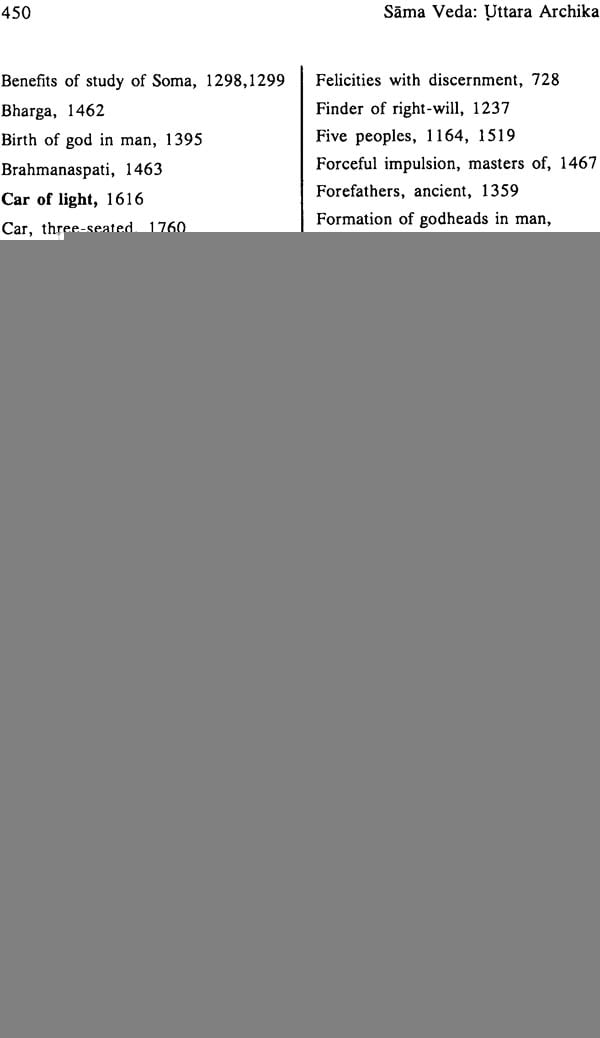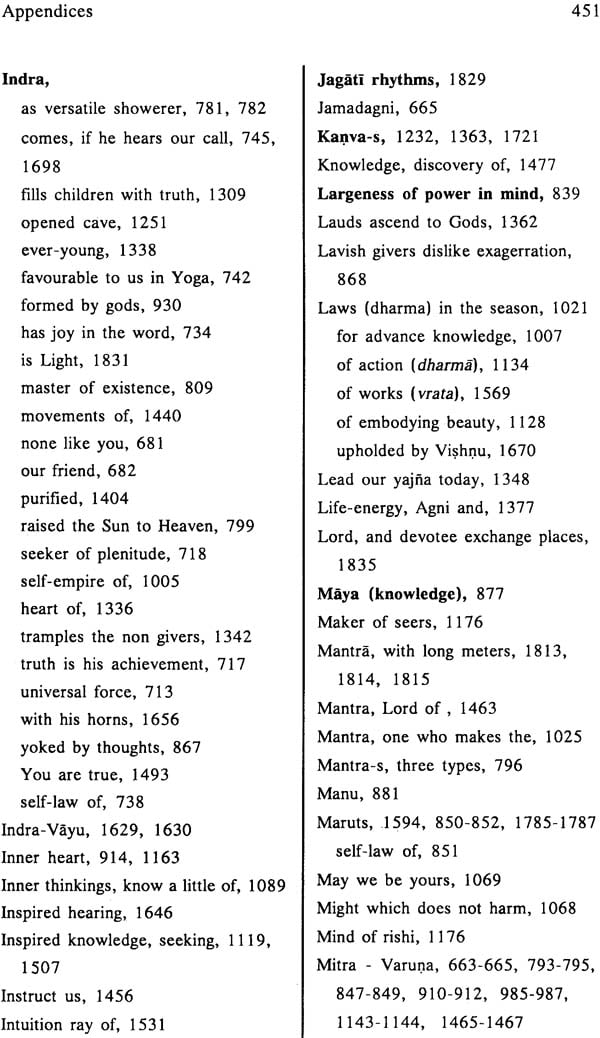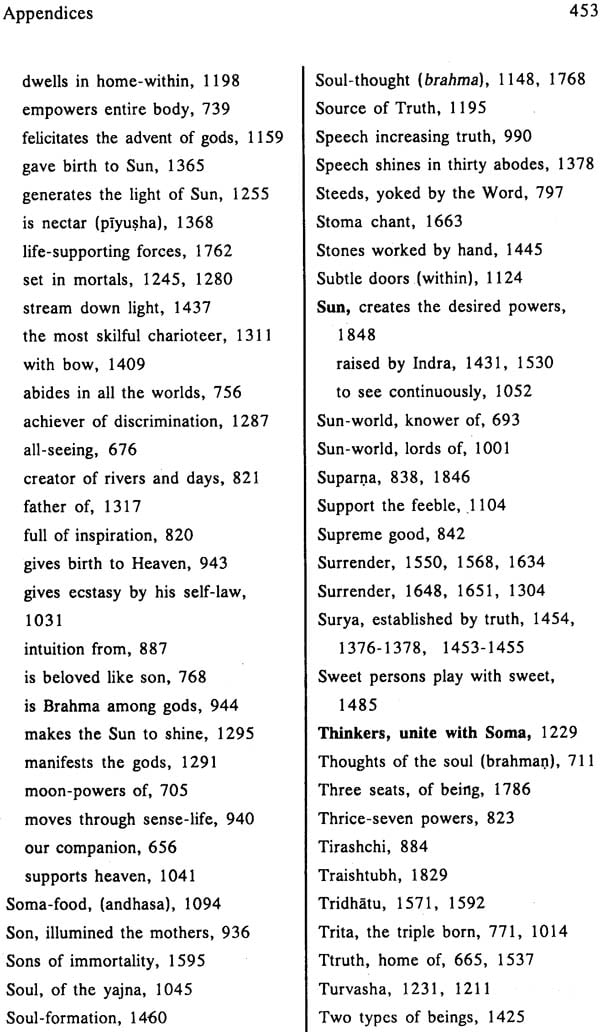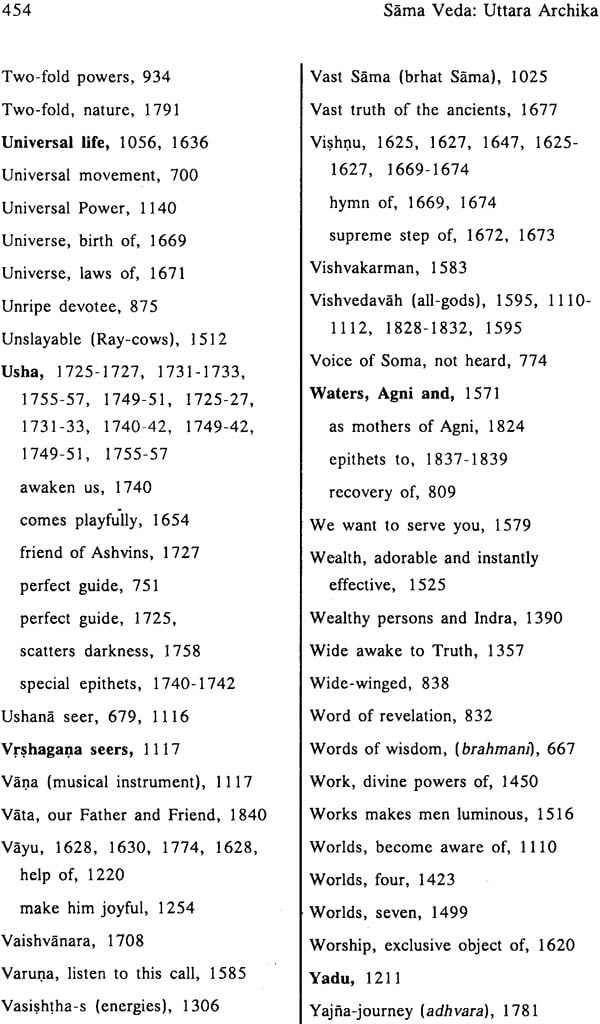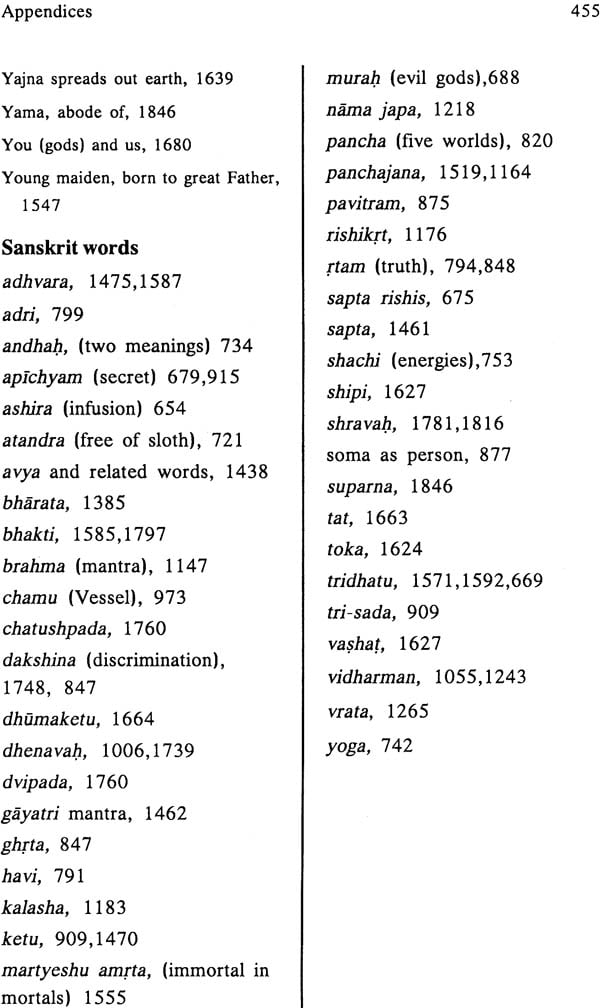
Sama Veda: Sanskrit Text, English Translation and Notes (Set of 2 Volumes)
Book Specification
| Item Code: | NAF376 |
| Author: | R.L. Kashyap |
| Publisher: | Sri Aurobindo Kapali Sastry Institute of Vedic Culture |
| Language: | Sanskrit Text with English Translation |
| Edition: | 2014 |
| ISBN: | 8179940659 |
| Pages: | 768 |
| Cover: | Paperback |
| Other Details | 8.5 inch x 5.5 inch |
| Weight | 920 gm |
Book Description
Dr. R. L.. Kashyap is professor Emeritus of Electrical and Computer Engineering at Purdue University, Lafayette, Indiana in USA. He had his Master’s degree from Indian Institute of Science, Bangalore and Obtained Ph.D. from Harvard University. He is the recipient of many International recipient of many International awards. In 2003 he has received Vedanga Vidvan award instituted by Maharshi Sandipani Vedavidya Pratishthan (Ujjain), an autonomous body of HRD, Govt. of India.
He has authored more than 350 research articles of which 220 are published in scholarly technical journals and the rest were presented at conferences. He has guided over 50 doctoral students.
He has written extensively on Veda. Some of his widely read books on Veda are: ‘Krishna Yajur Veda Taittiriya Samhita’ (3 Volumes), ‘Rig Veda-first Mandala’, ‘Rig Veda- Third Mandala’, ‘Rig Veda-fourth Mandala’, ‘Rig Veda-Fifth Mandala’, Rig Veda- Sixth Mandala,’ ‘Rig Veda-Tenth Mandala’, ‘Ehy Read Rig Veda’, ‘Rudra Mantras’, ‘Essentials of Atharva Veda’, ‘Essentials of Yajur Veda’, ‘Work Enjoyment and Progress’ etc.
He is the Honorary Director of Sri Aurobindo Kapali Sastry Institute of Vedic Culture, Bangalore.
Volume 1
This book contains the first 650 mantras of the Sama Veda Samhita along with their text and translation. These mantras constitute the Purva Archika or the first part. The remainin g 1225 mantras constituting the second part or Uttara Archika will be published separately.
Chhandogya Upanishad is a well-known Upanishad associated with Sama Veda. It gives the following meaning for the word Saman.
“Om, Surely, the meditation on the whole saman is good (or perfect)
(1); anything that is perfect, people call as saman (2); anything that is not good, as asaman (3);
An important feature of the Sama Veda is that many mantras are repeated verbatim. Specifically 257 verses in the first part are found in the second part. Thus the number of distinct mantras in the Sama Veda Samhita is only 1610.2 In the entire book, the number of verses which occur in three places is four.
The repition of mantras occurs in other Samitas also. For instance the RV mantra ‘Shunam huvema’ occurs in 14 similarly RV occurs in 7 RV suktas. It is SV(76).
As declared in SV (198) (same as RV)or SV(471), there are three types of mantras in the Veda namely, rk, yajus and saman. A rk mantra is material, expressed in one of the mantra is meant to be sung. The Rig Veda Samhita has only RK mantras. Yjur Veda Samhita, both the Shukla and Krshna recensions, have both yajus and mantras. Sama Veda Samhita has only Sama mantras. Atharvana Veda has mostly RK mantras.
There are least 214 mantras in Sama Veda which are common to Rig Veda and Yajur Veda, namely Shukla or Krshna (with some minor variations).3 Many of these mantras are in Atharva Veda also. The complier of the Sama Veda perhaps felt that these 214 mantras need special study. The listing of these mantras is in Appendix two.
All the SV mantras, except for 102 of them can be traced to a rk mantra of the currently available Rig Veda Samhita, the so-called Shakala recension.4 The Sama mantra is often a variant of the corresponding Rig Veda mantra could differ in a word or the word ending could be modified. Among the 102 mantras, five are repeated ; ten of them which are in the Mahanamni Archika (SV 641-650) are quite similar to the corresponding verses in the Mahanamni sukta of rig Veda Khila. The Khila has the mantras from other Rig Veda Shakhas such as Bhaskala, now lost.. Eleven of them are in the current Atharva Veda; 4 in the shukla Yajur veda, 2 both in Shukla Yajur Veda and Atharva Veda and one in the Taittiriya Upanishad. Thus we have accounted for 33 verses. Thus 1806 mantras of sama Veda can be traced to other Veda Samhitas. For the 69 remaining verses, there are no correspondences with mantras in other Veda Samhitas.
Volume 2
Even though this book contains only the 1225 Mantra –s of sama Veda constituting its second part or the Uttara Archika, we will consider in this essay the entire Sama Veda with both the parts.
All the mantra –s of SV except for 102 mantra-s (66 in purnaarchika and 36 in uttara archika) are in Rig Veda. Is it one compilation or are there two compilations here? The Purva Archika with its 650 mantra-s is divided 5 kand-s: all the mantra-s in the same Kanda are usually attributed to the same deity; there is no division of a kanda into sukta-s. on the other hand, the Uttara archika is divided into 22 adhyaya-s or chapters, each chapter having several sukta-s, each sukta having usually three mantra-s, all mantras coming from the same sukta in RV. There are 400 sukta-s in the Uttara archika. Thus Sama Veda is made of two different compilations. What is the logic behind each compilation? This question is answered in the essay in section (iii).
Viewing the Sama Veda as made up of two independent compilations answers an important question. Out of the 650 mantra-s of purva Archika, 257 are repeated in Uttara archika. This repetition does not make sense if SV is regarded as very important; thus their presence was necessary in both the compilations, especially since the persons who compiled them were (probably) the same. Again 12 mantra-s of Uttara Archika are repeated in itself. About 4 mantra-s occur thrice in SV.
It is often said that sama Veda is the foundation for Indian classical music. It is said that seven swara-s in the Indian music with the names such as Madhyama, Gandhara are related to the seven svara-s of SV indicated by the accent marks in the text of Sama Veda. Whereas Rid Veda, Yajur Veda and Atharva Veda mantra-s are chanted in a special way following certain special rules, only the Sama Veda verses are sung. The song associated with each mantra is Known as Samagana. The text for the Samgana verse is derived from the text of the associated Sama Veda mantra, known as Samagana. The text for the Samagana verse is derived from the text of the associated Sama Veda mantra. Known as yoni or source mantra, following certain rules, so as to make the Samgana source mantra, following certain rules, so as to make the samgana musical. For instance ‘Agane’ become ‘o gna I’ for the Same Sama Veda source mantra, there could be more than one Samgana verse. Some frequently quoted mantra-s from Taittiriya Upanishad dealing with anna (food)have also their Samgana versions, indicating their power. One of these Upanishad mantra-s is SV (594). The essay. ‘Samagana’, in section (vii) gives more information.
Even from the ancient times, there were strong differences of opinion among the followers of rig Veda and Yajur Veda. But hundreds of Mantra-s are common to both Rig Veda and Yajur Veda. The teachers who wanted to foster harmony wanted a single book.where these common mantra-s are placed. Sama Veda has also served this purpose. Sama Veda and Shukla Yajur Veda (Vajaseneya recension) Many of these are also in Krishma Yajur Veda (Taittriya). Some of them are also in Atharva Veda. See the appendix one for a listing of these SV mantra-s. Sama Veda has 406 mantra-s from Atharva Veda listed in Appendix 2. There are 93 mantra-s common to all the four Vedas. The essay (vi), ‘Pride in One’s shakha and the common mantra-s’ has more relevant information.
For the 1773 mantra-s of SV which are in Rig Veda, their associated rishi-s are well known. They are roughly 294 in number. Among them, the ridhi-s of the lineage of Angiras are prominent, Also present in many mantra-s are the rishi-s of lineages of Kanva, Kashyapa, Vasishtha, Atri and Bhardavaja. For a listing of the names of the rishis with their lineages, see the Appendix 3. For the other 102 mantra-s, the rishi-s are not known.
Who are the Kandarshi-s or compilers of the various Kanda-s or adhyaya-s of SV? On special occasions, Samavedins remember the names of the following 13 Kandarshi-s known as samavargacharya-s: Ranayana, Shatyamugnya, Vyasa, Bhaguri, Aulandi, Gaulgulavi, Bhanumanau aupamanyaya, Karati, Mashakagargya, Varsha gavya, Kuthuma, Shalihotra, and Jaimini. Each of these sages grammarian Patanjali prepared a separate compilation. The great grammarian Patanjali refers to a thousand Shakha-s or recensions. Now we have only three recensions associated with the rishi-s, Kuthuma, Ranayana and Jiamini. According to the well-known scholar Damodar Satavalekar, there is no difference in the texts of the Ranayiniya and Kauthumiya but there are differences in the svara.
This (SAKSI) book is based on the Kauthumiya recension with its 1875 mantra-s with 1225 in the Uttara archika. According to Satavalekar, the Jaimini recension has only 1693 mantra-s, since it has only 1041 mantra-s in its Uttara archika. The purva archika is similar in the two cases.
Recall that Rig Veda has ten Mandala-s. Is their a pattern in the contributions of the different mandala-s to SV? Similarly is there a pattern in the contribution of the shukla Yajur Veda its forty chapters in the contribution in the separate essays; ‘The details of contribution made by RV and YV to Sama Veda,’ in section (iv). The intimate relationship between Sama Veda and Rig Veda has been mentioned even in the ancient Upanishads and SV’
We have mentioned that SV has many repetitions and it has taken verses from RV, YV, AV, and Upnaishads. Number of unique SV verses not in RV is 97. SV has 9 mantra-s from Rig Veda Khila (Kanda), 4 mantra-s from Shukla Yajur Veda (Vajasanaya) which are not in RV, eleven mantra-s from AV which are not in RV. There is one contribution SV (594) from Taittariya Upanishad. Thus the unique verses in SV which are not elsewhere is (97 minus 28) or 69. The details are found in Appendix 2 of the ‘Sama Veda: Purva Archika’ (SAKSI). In many cases SV mantra-s are not replicas of the corresponding Rig Veda mantra-s; they can be said to be minor variants. Usually tha variation is in the word ending. In some caes. Variant may be more appropriate than the original one as in SV 618. The edition of Ravi Prakash Arya- Griffith Points out the variations.
Now we can understand the deeper reasons behind the well known quotation of Bhagawad Gita (10.22) stating that, ‘among the Veda-s, sama Veda is supreme’. Sama Veda being a complitation makes all the Veda mantra-s accessible to many persons who may not have the time to read or recite an entire RV mandala. Secondly it stresses the commonality of the Veda-s and mentions the three hundred mantra-s common to Rig Veda, Yajur Veda and Sama Veda. The compilations are done so that the text is amenable to music.,p> For details on the Sanskrit texts used by us, the available translations etc., please see the appendix 5 of ‘Sama Veda: Purva Archika’ (SAKSI), 2008. There exist several Sama Veda texts in MS from with interesting overviews in Sanskrit which are not accessible. One such book is, ‘Prakriti (gramageya-veya) ganatmakah’ (1976) Which gives several gana texts for each mantra along with an excellent overview in Sanskrit. It is edited by Shri Shankaranarayana Shrouti and published by Shankara Math, Kanchi, 1976.
Volume 1
| i | Acknowledgements | vi |
| ii | Introduction | vii |
| iii | Sama Veda and Rig Veda: Connection | ix |
| iv | Message of the Veda | ix |
| v | Gods of the Veda and their Powers | xii |
| vi | The accent marks of Sama Veda and Sama gana | xv |
| viii | Rishis | xviii |
| viiii | Format of the meaning of the mantras in the book | xviii |
| ix | Contents of the Appendices | xix |
| x | Abbreviations | xx |
| I | Text and Translation of the Purva Archika (Mantras 1-650) | |
| 1 | Agneya Kanda: Agni | 1 |
| 2 | Aindra Kanda: Indra | 43 |
| 3 | Pavamana Kanda | 170 |
| 4 | Aranya Kanda | 212 |
| 5 | Mahanammi Archika | 238 |
| II | Appendices | |
| 1 | Mantras repeated verbatim in SV itself | 243 |
| 2 | Mantras coomon to other Vedas | 244 |
| 3 | More on the gods of the Veda | 246 |
| 4 | Deeper meanings of some words | 250 |
| 5 | Commentators, translators and editors | 253 |
| 6 | Highlights of this translation | 254 |
| 7 | Note on the Devanagari text of the mantras given here | 257 |
| 8 | Note non transliteration | 258 |
| 9 | Subject Index | 261 |
Volume II
| i | Acknowledgments | vi |
| ii | Introduction | vii |
| iii | Sama Veda viewed as two compilations | vi |
| iv | Details of contribution of RV, YV and AV | xiii |
| v | Sukta-s for the various deities | xv |
| vi | Pride in one's shakta and the common mantra-s | xvii |
| vii | Sama gana | xix |
| viii | Upanishads on the Sama Veda and its connections | xx |
| ix | Message of the Veda | xxii |
| x | God of the Veda and their powers | xxv |
| xi | Format of the expalnation of Mantra-s | xxvii |
| xii | Contents of Appendices | xxviii |
| xiii | Abbreviations | xxix |
| I | Text and Translation of Uttara Archika with 1225 mantra-s | |
| II | Appendices | |
| 1 | Mantra-s common to RV, SV, and YV | 420 |
| 2 | Mantra-s common to SV and AV | 425 |
| 3 | Rishi-s of Sama Veda | 431 |
| 4 | Agni, Indra and Soma | 434 |
| 5 | Deeper meanings of Some words | 439 |
| 6 | Highlights of Translation | 442 |
| 7 | Note on the Devanagari text | 445 |
| 8 | Note on tranliteration | 447 |
| 9 | Subject Index | 449 |
